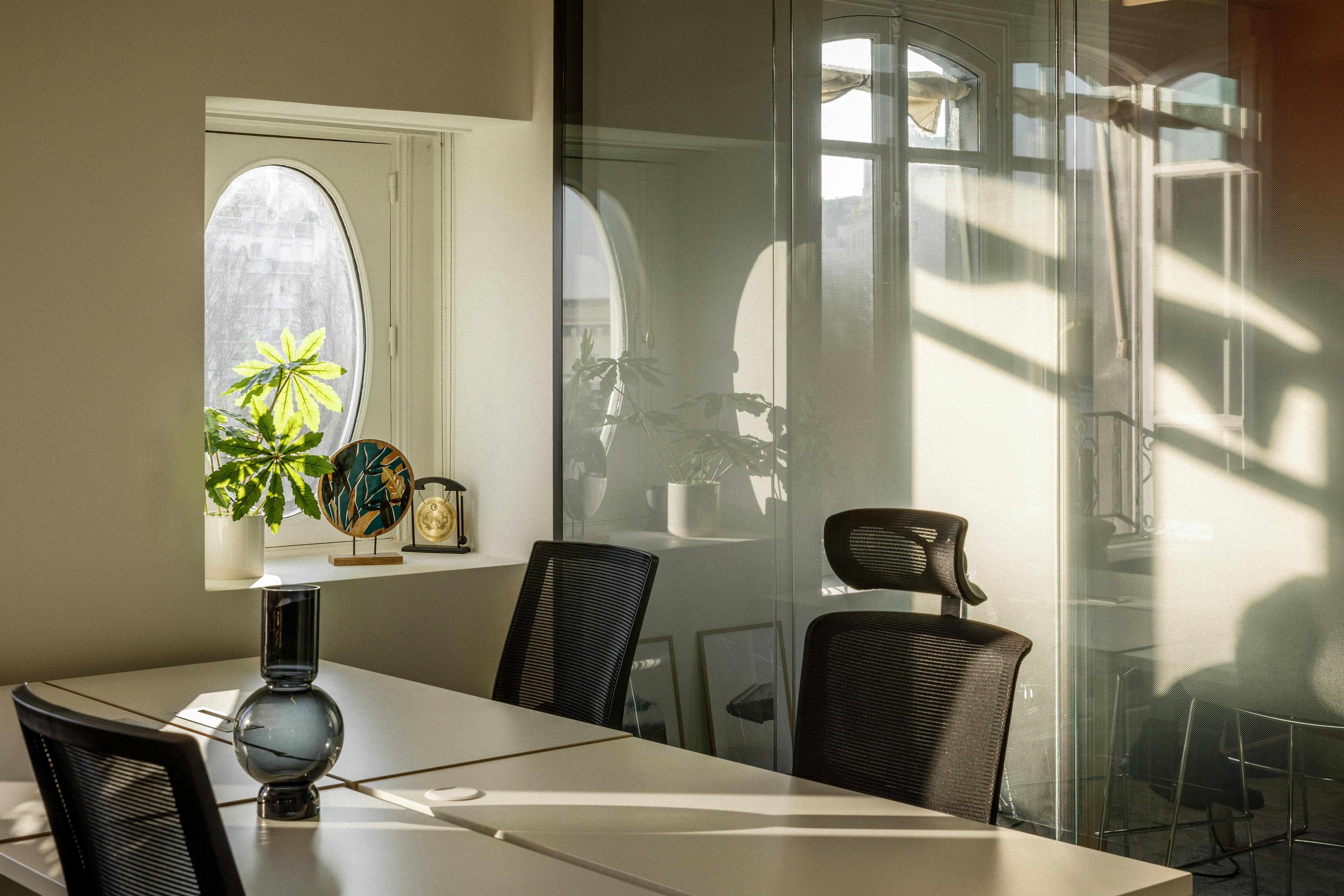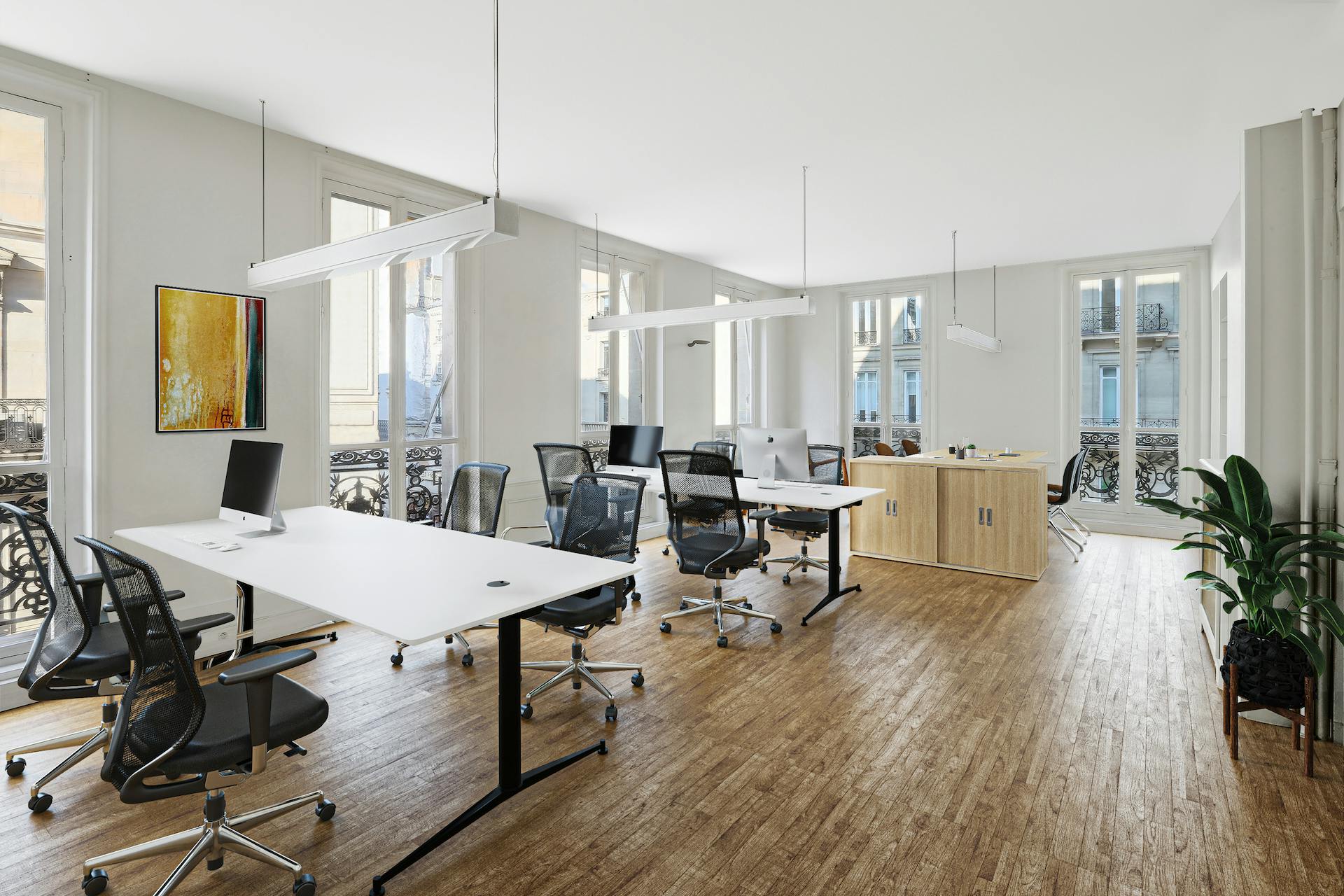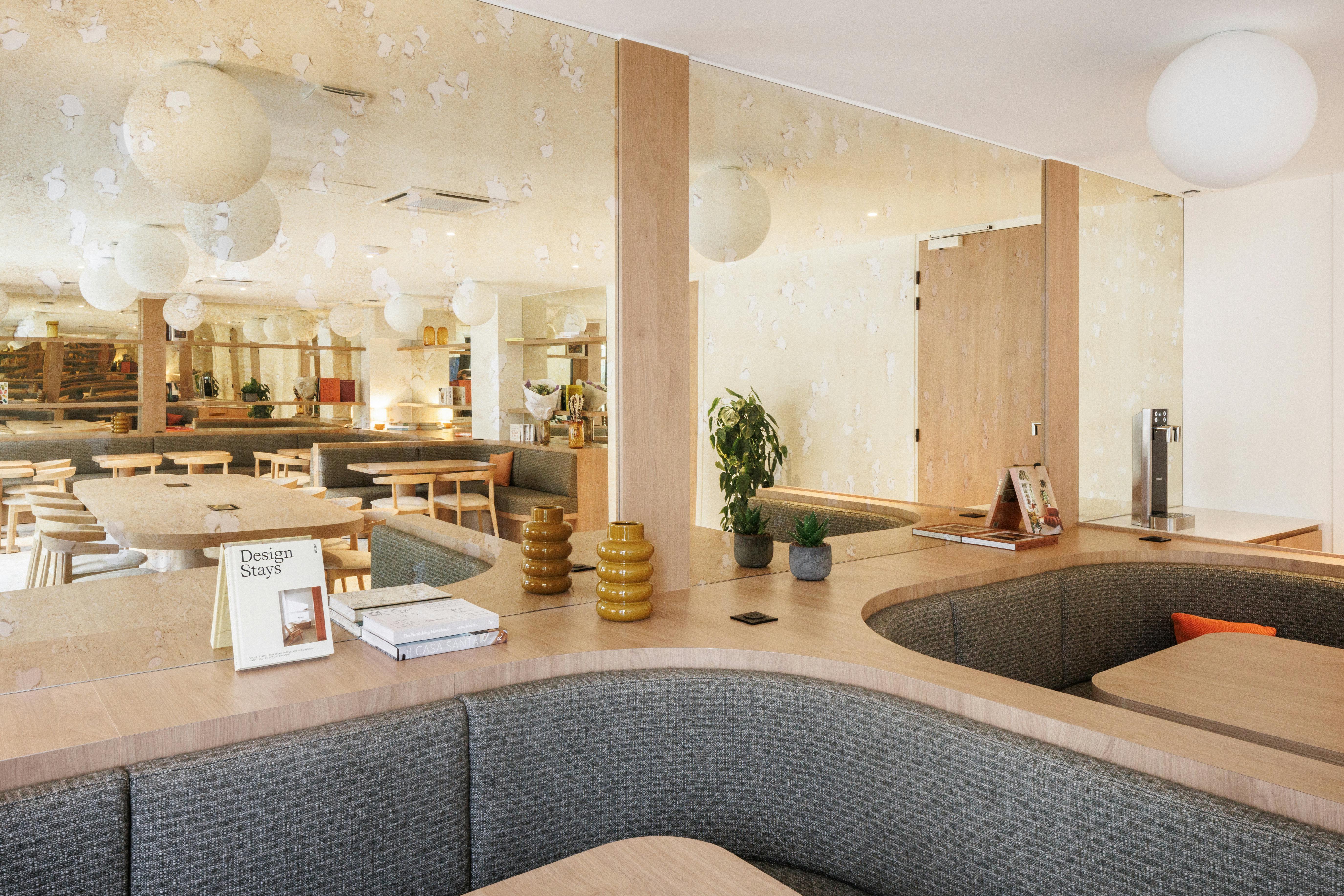

Open Space: the secrets of a productive workspace
Open space, a term that resonates in the modern professional world, has become a must for most of us. It defines a working environment where partitions disappear in favor of greater proximity between colleagues. You're probably wondering how we got here, what the pros and cons of this configuration are, and how to make the most of the experience.
Indeed, the choice of open space design has a considerable influence on your productivity and well-being at work. It also reflects your company's culture, values and vision. In this article, we'll explore the secrets of working effectively in an open space, focusing on the balance between collaboration and concentrated individual work.
Open Space in the modern business landscape
Definition and history of Open Space
Open space, as we know it today, emerged in the 1950s, but its real boom came in the 2000s with the rise of companies focused on creativity and collaboration.
This concept was shaped by the need to encourage interaction and the exchange of ideas between team members, by eliminating partitions and individual offices. Today, open space continues to be a popular option for many companies. However, it has evolved to meet the changing needs of workers. Companies are now integrating elements of flexibility, well-being and technology into their open spaces. Current trends emphasize the creation of more balanced environments, where collaboration is encouraged, but where there are also areas dedicated to concentrated individual work.
Advantages and disadvantages of Open Space
There are many advantages to working in an open space. Ideas flow freely, and projects often progress more quickly than in individual offices. This is something we particularly appreciate at Deskeo.
However, there's a downside to this. Open spaces can sometimes be noisy and distracting, making it difficult to concentrate. The lack of privacy can also pose problems for certain confidential or personal tasks.
Enhanced communication and collaboration
One of the notable advantages of open space is that it facilitates communication.
Imagine you're working in an open space and you're faced with a problem you can't solve. Your colleague, an expert in the field, is nearby. Within minutes, you've exchanged ideas, found solutions and defined a plan of action. This speed of communication and collaboration is a major advantage of open space. It enables you to solve problems quickly, encourage creativity and maintain a fluid workflow, and is one of the strong points of this environment.
Challenges to concentration and privacy
This proximity can, however, become challenging. Concentration is a valuable skill, but it can be sorely tested in an open space.
To overcome this challenge, it's important that you put in place personal strategies to preserve your concentration. For example, you could use noise-cancelling headphones to minimize noise distractions, or define time slots dedicated to tasks requiring intense concentration. Managing your workspace and your time is crucial to maintaining your productivity in open spaces.
Comparison: Open Space vs. Traditional Offices
The benefits of open space in terms of communication and collaboration are undeniable, but individual offices offer greater privacy and fewer distractions.
The choice between these two environments will depend on your company's culture, its objectives and your employees' preferences. There is no one-size-fits-all solution, but by understanding the strengths and weaknesses of each option, you'll be able to create a workspace that promotes productivity and well-being for all.
Optimizing Open Space for employee well-being
Design strategies to reduce noise and distractions
One of the major challenges in open spaces is the constant cacophony and distractions that can hinder concentration. Don't worry, there are effective solutions, and we're going to share them with you!
Innovative acoustic solutions
You'll be amazed at how simple adjustments can have a huge impact on improving your open space experience.
Take, for example, the installation of acoustic panels along walls and removable partitions between workstations. These specially designed panels and partitions absorb noise, creating a quieter, more pleasant environment.
But that's not all. To maximize the benefits, it's important to position them strategically in the space. Acoustic panels should be placed where noise is most intense, often near sources of distraction. Removable partitions can be used to create semi-private areas or temporary meeting spaces.
What's more, the choice of materials and design can also influence the effectiveness of these solutions. Some materials absorb sound better than others, and aesthetic designs can be incorporated to add a touch of style to your open space.
Tips for maintaining concentration in a shared space
Concentration is the cornerstone of open-space productivity. How can you maintain your concentration and increase your efficiency, even when you're surrounded by distractions? Here are a few tips to help you do just that.
Deep Work techniques and interruption management
Deep Work techniques are proven methods for diving deep into complex and demanding tasks. They involve blocking off periods of time dedicated to distraction-free tasks, enabling you to produce quality work in less time.
To implement these techniques, start by identifying the times of day when you are most focused. Then set up a schedule that includes time slots dedicated to deep work, limiting interruptions. You can also use tools such as time management apps to help you stay on track.
When it comes to managing interruptions, set clear limits. Communicate with your colleagues about when you need to concentrate, and ask them to respect these times. You can also set up visual signals, such as headphones, to indicate that you are in concentration mode.
Best practices and good manners in Open Space
Basic rules for collective harmony
To create a pleasant, harmonious open space working environment, we recommend you follow a few basic rules.
Try to maintain an appropriate noise level by avoiding loud conversations. Make sure your workspace is clean and tidy. Respect for common spaces, such as meeting rooms and rest areas, is just as crucial. Make sure, for example, that you reserve meeting rooms responsibly, without monopolizing them. Finally, never forget the importance of politeness and courtesy. A simple "good morning" in the morning and a "thank you" after receiving help or advice play a major role in maintaining a harmonious atmosphere and promoting positive relations in open spaces.
The Open Space Charter: commitments and recommendations
Setting up an open space charter is an excellent way of establishing clear commitments and recommendations for all users of this space. This charter may vary according to the specific needs of each company, but it is generally based on a few fundamental principles.
First of all, it can define the hours of use of common spaces, such as meeting rooms or break rooms, to ensure an equitable distribution of these resources. It can also specify rules concerning noise levels, notably by encouraging the use of headphones or dedicated work areas for telephone conversations. In addition, the charter can include guidelines on the cleanliness and organization of workstations, reminding everyone of their individual responsibility in keeping the environment clean and tidy.
Individual commitments for collective respect
Beyond the general rules of the charter, it is important that each employee makes individual commitments to contribute to the respect of the open space collective. These commitments can include respecting meeting times, reducing noise during peak concentration hours, and taking an active part in creating a pleasant working atmosphere.
Everyone can also pledge to report any disruptive behavior or violation of the charter's rules to the open space management team, helping to maintain a respectful and productive environment for all.
Tools and techniques for optimal productivity in Open Space
The role of technology in improving productivity
Technology plays a central role in improving open-space productivity. It's essential to master digital tools such as task management apps (Trello, Asana), online communication platforms (Slack, Teams), collaboration software (Google Workspace), time management apps (TrackingTime, Harvest). With these tools, you can organize your work, communicate effectively with your colleagues and easily access the information you need to complete your tasks.
Gadgets and apps for efficient working
In addition to these digital tools, there are a host of gadgets and applications designed specifically to improve efficiency in open spaces. Earmuffs are particularly useful for isolating you from ambient noise and allowing you to concentrate on your work. Height-adjustable desks give you the flexibility to work standing up or sitting down, which can help reduce fatigue and improve comfort.
Setting up rituals and structuring breaks
Creating work rituals and breaks is an essential part of maintaining optimum productivity in open spaces. Plan moments of intense concentration when you devote yourself fully to a task without interruption. You can also use time management techniques such as the Pomodoro technique to divide your work into defined time intervals, alternating between concentrated work and short breaks.
Breaks are also important for recharging your energy. Take the opportunity to stretch, take a short walk or meditate to relax. This will enable you to return to your work with a fresh mind and renewed concentration.
Integrating Open Space into the company's HR policy
Open Space Recruitment and Human Resources Management
When recruiting new employees, it's essential that you take the open-plan dimension into account. You need to determine whether candidates possess the skills and personality traits needed to work successfully in an open-plan environment. The ability to work collaboratively, manage distractions and maintain a high level of concentration are all valuable open-space skills.
Managing human resources in open spaces also requires a tailored approach. Don't hesitate to offer training and professional development opportunities to help employees adapt to this environment.
Impact of Open Space on talent attraction and retention
The adoption of open space can have a significant impact on your ability to attract and retain talent. Some employees may be attracted by the culture of collaboration and innovation that open space offers, while others may prefer a more traditional working environment. It's important to understand your employees' preferences and find a balance that works for everyone.
Offering benefits such as flexibility in the choice of workplace, the ability to work remotely or the provision of flexible workspaces can help make open space more attractive to talent. However, it is also essential to ensure that the open space environment is conducive to productivity and well-being, in order to retain your most valuable employees.
What to remember?
In a few words, the open space is an inescapable reality in the modern working world. It is constantly evolving with trends in hybrid working and continues to provoke debate. It's up to each company to find the best way to optimize it for responsiveness at work, employee well-being and productivity. This raises questions about how open spaces can fit into this new reality. Indeed, the future of these open spaces may well be marked by the introduction of cutting-edge technologies, such as augmented reality or immersive videoconferencing, to create more immersive connections between employees, even at a distance.
What's more, companies will be exploring new ways of personalizing their open-plan workspaces, adapting them specifically to the needs of their teams. Tomorrow's open space will thus be the fruit of a combination of tradition and innovation. The aim? To offer a dynamic working environment that can be adapted to the challenges of our times.

Contact Us
We find your Perfect fit!

